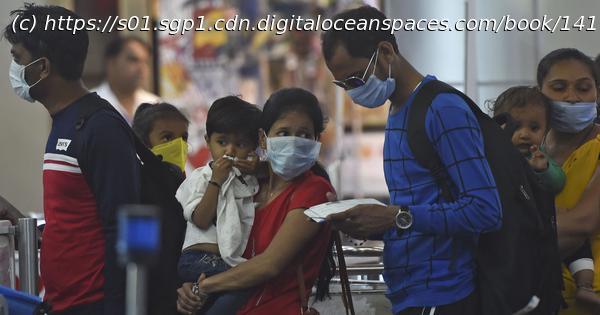On July 2, the state reopened for tourism even in the midst of rising cases.
Amid a rising spate of Covid-19 cases, Goa, as part of Unlock 2.0, officially reopened for tourism on July 2. Approximately 250 hotels registered with the state tourism department have been allowed to open following guidelines set by the state. While the state has received a mixed response to this decision, the number of Covid-19 cases continues to rise. Goa witnessed its highest single-day rise of 198 cases on July 15. By July 22, the state had confirmed 4,167 cases – of which 1,607 were active – and 28 deaths. These cases have been reported from over 50 areas in the state, the state’s Covid-19 bulletin shows. At least 10 neighbourhoods, none in popular tourist spots, were declared containment and micro-containment zones – see here and here. On July 15, at a press briefing, Chief Minister Pramod Sawant announced a three-day statewide lockdown and a “janata curfew” everyday from 8 pm to 6 am until August 10 – three hours longer than the night curfew nationwide. How did a state that was declared a green zone in early May clock in nearly 4,000 new cases in two months? The answer is complicated, and comprises of an array of reasons. Interviews with recovered patients, a local councillor and health officials suggest administrative glitches that allowed Covid-19 to spread its tentacles from one hotspot to all across Goa. Mismanagement of containment zones, lack of timely ambulance services, fear among and shortage of healthcare staff, social stigma against the disease, blurry details around contact tracing and the monsoon season all played a role. Goa is currently witnessing its third wave of Covid-19 spread, state health officials told IndiaSpend. The first wave in the week of March 25 had consisted of the state’s first seven Covid-19 cases. All seven had a travel history, and had recovered fully at the Employees’ State Insurance Hospital, the state’s designated Covid hospital at Margao in South Goa. By April 20, Goa had been declared Covid-free. By ramping up its health infrastructure and restricting interstate movement, Goa had managed to push back the disease, the state’s health minister had told IndiaSpend in an interview. Goa had been fairly “lucky in the beginning”, said Oscar Rebelo, a consultant-physician from Panjim, explaining that despite being an international tourist destination and its borders kept open, Goa had avoided an initial surge, unlike other states. The state “used its time well”, setting up the Covid hospital, training health staff and restricting inter-state movement, he added. In fact, the first week of the lockdown in Goa was so severe that a food crisis had ensued. For 23 days, the state was officially Covid-free. The second wave started on May 14, soon after movement of stranded persons by trains was allowed and seafarers started returning. This was expected, health officials said. “We had been prepping our staff for the second wave,” said Ira Almeida, medical superintendent of Hospicio Hospital in Margao and in-charge of ESI Hospital. By May 30, there were 70 confirmed cases,28 of them active as of that date – all from outside, and all controlled. With June came a spike. “The third wave started with Mangor Hill,” said Almeida. Mangor Hill is a township covering six wards near Vasco, a port town in Mormugao sub-district in central Goa. “The total area would have a population of around 9,000-10,000 people,” explained one of the local councillors of Mormugao from the ruling party, requesting anonymity. Some time towards the end of May, Stan*, an elderly resident of Chhota Mangor Hill, fell ill. Feeling feverish and coughing, he visited his local doctor. According to the version of events provided by the councillor, the doctor took Stan to the sub-district hospital, one of Goa’s five Covid-testing centres. By June 1, two Covid-positive cases were reported in Mangor Hill. These were the first two cases of Covid-19 in Goa that seemingly came from within the state. Contact tracing revealed that Stan, a trader of scrap fish – he collected scrap fish and sold it as chicken feed – was, perhaps, in touch with truck drivers transporting fish from other states. Truck drivers’ services are considered “essential”, so they are not required to undergo testing. “We are still not completely sure where it came from, but it had to [have] come from outside. It is possible that he was in touch with one of the truck drivers who could have been positive,” said Utkarsh Betodkar, the state epidemiologist and nodal officer for Covid-19 at Goa’s Directorate of Health Services. After testing residents, ward numbers 11 and 17 within Mangor Hill were declared as containment zones on June 1. When an area is declared a containment zone, no one is allowed to enter or exit without permission, and movement within is restricted. “This was a mistake,” said the Mormugao councillor. “Ward numbers 11 and 17 represent Chhota Mangor Hill and Bada Mangor Hill. Both wards are separated by a building. The first positive cases were in Chhota Mangor Hill. Why did they have to seal off Bada Mangor Hill?” he asked. Bada Mangor Hill houses a number of daily-wage workers and their families, he said, adding, “They need to step out and earn everyday. Once this area was declared a containment zone, they were entirely dependent on rations provided by the administration. But food rations were not coming in on time.






